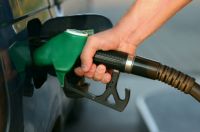
One of the toughest decisions that the government must take in this years’ budget is on the diesel price front. The diesel subsidy is an issue on many grounds.
Firstly, for the government’s budget, the fiscal deficit may overshoot its expected target at least by 20%. This means that the government has to contain the fuel subsidy bill by bringing it more near to the real cost. During the last year, the government has allocated Rs 23640 crores for fuel subsidy. But as per the first hand estimates, the actual figure may reach nearly thirty five thousand crores for the current year.
Secondly, a subsidized price for diesel encourages more diesel consumption and this trend is visible in the passenger car market. Consumers are shifting from petrol cars to diesel cars, thus raising the demand for diesel further. The real cost for having and maintaining a diesel car is now much lower than that for petrol car mainly because of the subsidized price for diesel.
Automobile industry is also awaiting a clear signal from the government on the diesel subsidy front. Since the demand for diesel cars is higher, the companies have to invest heavily on diesel engines only if the government is continuing with the present scheme of diesel subsidy. Suzuki has already signed a firm contract with Fiat for the supply of diesel engines. Toyota is awaiting the government stand before building a diesel engine plant in India.
Thirdly, diesel is a polluting fuel compared to petrol. Subsidizing the diesel and simultaneously subsidizing clean energy programmes like the national clean energy mission is a contradictory situation.
The Kirit Parikh committee has suggested the deregulation of diesel prices two years before. But the measure is difficult to introduce in the country politically. Besides, the deregulation of diesel prices may create another inflationary wave in the economy. Hence, rather than a total deregulation, a partial increase in the price of diesel is the most viable solution. If the budget 2012-13 is pursuing such an objective, what will be the options for the government?
Firstly, an increase in diesel price outright is a not a budgetary procedure and that may not be followed in the budget. Besides, it will cause popular perceptions against the budget. Simultaneously, when the price is raised, the benefit will also go to the state’s exchequer in the form of increased sales tax without sharing the political responsibility.
The next and perhaps the most possible option is to raise the excise duty of diesel by Rs one per liter of diesel. In the extreme case, the government may look to increase the duty to Rs two per liter, facing fierce political resistance and inflation potential. Of course, the benefit of such a move is that the state government can’t enjoy a revenue gain through sales tax rise, because it is not price but the excise duty which is hiked. But they will get a share in the excise duty later.
Another innovative option is also available for the government. It is imposing a special fuel cess of a given percentage or value on diesel to service the fuel subsidy. Such a move is more rewarding because the amount can be exclusively used by the government to finance fuel subsidy. The added benefit of the special fuel cess is that it should not be shared with the states. But here, the government should consider the fact that there already exists a fuel cess to finance the road projects.
Similarly, the most expected move from the government of enhancing the excise duty on diesel engines is also a viable option. An excise duty hike on diesel engine based on power of engine rather than length of the car should be the criteria rationally. Here, the disadvantage is that only people with new diesel cars will bear the burden of the diesel subsidy while the owners of existing vehicles continues to enjoy the tax benefit. Kirit Parikh himself advocated a road tax on diesel cars recently. Even that move will be tried by the government. But the road tax has many administrative weaknesses.
Of all the above mentioned options, the best one and perhaps the possible one is a combination of one Rupee excise duty per liter of diesel supported an increase in the excise duty of diesel engine cars.











